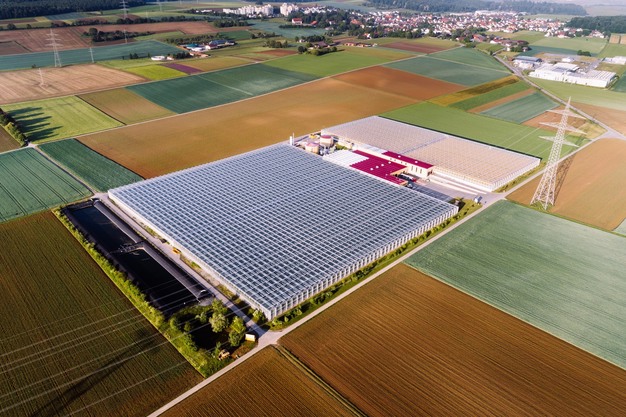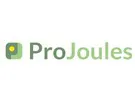In the middle of agricultural land in Eberdingen, Germany, stands 6 hectares of greenhouse. It is the only greenhouse in the wider area. "I can therefore not so easily ask the neighbour what he will do with his crop next week," laughs grower Heiko Hagdorn of Hagdorn Tomatoes. It is the reason the grower started working with the model-based crop planning platform ProJoules. Together with his crop consultant, the program helps him make the right choices.

Just west of Stuttgart, Heiko grows vine tomatoes, cocktail tomatoes and snack tomatoes. He does the partly exposed, in a 2-hectare greenhouse newly built in 2016. The remaining 4 hectares have been there since 2008. It was the start of the farm, where cows were previously kept by Heiko's parents and vegetables were later grown. "That was still outdoors. My parents grew beans and cucumbers."
It was in the days of growing vegetables, still without a greenhouse, that the contact with customer Edeka, a large German supermarket chain, came about. It was decided to grow tomatoes. "I got to know tomato growing during an internship with Dutch grower John Hendrikx. There was a few weeks of training in his three-hectare greenhouse."
Remarkably, John is now Heiko's cultivation advisor. "When he sold his company, he called me to ask if I could use advice," he says. That was the case. "John comes by every fortnight."

Crop measurements are the basis of good cultivation
From the beginning, Heiko and John started recording crop measurements. They did so in Excel. "With that data, you can see what we have been doing in cultivation for the past 15 years," he says. A few years back, Hagdorn Tomatoes decided to invest in software from ProJoules. "In ProJoules, I can now see the data from our measurements clearly in graphs. This gives us quicker insight. If you made a mistake in Excel, you might not find out until several weeks later, when you start to see something in the crop again. Now in ProJoules, we can immediately see what the choices we make will do to the crop in the greenhouse."
Initially, it was John who learned about ProJoules. "The great advantage of working with John is that he also really still thinks like a grower. He also looks at the cost of investing and what you can earn from it." In the case of ProJoules, Heiko was quickly convinced. "If thanks to ProJoules, you avoid a mistake once a year and make a good decision instead, you'll have the cost of the programme out in no time."

Less light, so also a different cultivation strategy
In late September, German tomato growers prepared for the final stretch of the unexposed season. Meanwhile, the first harvest of the exposed tomato crop is approaching. For this, planting took place in week 32. Harvesting started at the end of week 39. "We have ten per cent less light this season," he says. As he says it, he briefly looks something up in his computer. "12 per cent even," Heiko corrects himself after glancing at the data from his solar panel system. "We have 12 per cent less light compared to the last five years."
The dark spring made Hagdorn Tomatoes decide not to apply a coating to the greenhouse this year. Normally, the company does. "Despite several weeks with high 24-degree Celsius temperatures resulting in a bit more stress in the crop, it was a good choice."
Together with consultant John, the tomato grower makes a cultivation plan every year in ProJoules, for the whole year. The basis is light. Or better, Joules, the total sum of light energy in the greenhouse at the plant level.
With the graphs in ProJoules, Heiko can see the effect of less light. "Because we know what joules we need per variety, we also know what to do when there is less light. For example, you can temporarily keep one less fruit per cluster, or grow with a lower plant density."
Variety profiles are ready in the crop planning platform. In times of the ToBRF virus, growers regularly change varieties. Grower Heiko also does so, only not because he is affected by the virus. So far, the solitary greenhouse has remained free of ToBRFV. "Taste and production are most important to me with new varieties," he says. Nevertheless, he will grow two new, resistant varieties next season. "They are successors to varieties I grow now," he says.
This season, for the unexposed crop, Heiko decided to remove the head later from the plant, based on insights from the model-based crop planning platform he has been working with for about three years now. "Normally we take the head out in weeks 32-35. This season, we did it three weeks later. In ProJoules, we could see if that was possible and what that would do to the crop. The programme helps us make the right choices."

Hybrid lighting and outdoor light combined optimally for best results
When Heiko started growing tomatoes under illumination, he invested in a combination of HPS with LED interlighting. The grower now works with 180 micromoles of LED overhead lighting as well as 75 micromoles of intermediate lighting. "Lately, we have gone from a maximum of 18 hours of lighting to a maximum of 16 hours. We try to save on our energy costs at the beginning and at the end of cultivation. With the insights from ProJoules, this is easier. We now talk about graphs and not just feelings."
The sun can't be controlled. That is different with LED lighting. "I see in ProJoules what the plant needs in joules. Together with the knowledge about sunlight from outside, I can then determine what I add extra with LED lighting. It makes working with ProJoules even more important for me in the lit crop."
In time, the tomato grower wants to move towards measuring PAR light as well. For now, measuring outdoor light as well as working with ProJoules is producing an ever better crop. "We try to set records every year, but for that, you have to make good cultivation decisions."
For more information:
ProJoules
[email protected]
www.projoules.com
